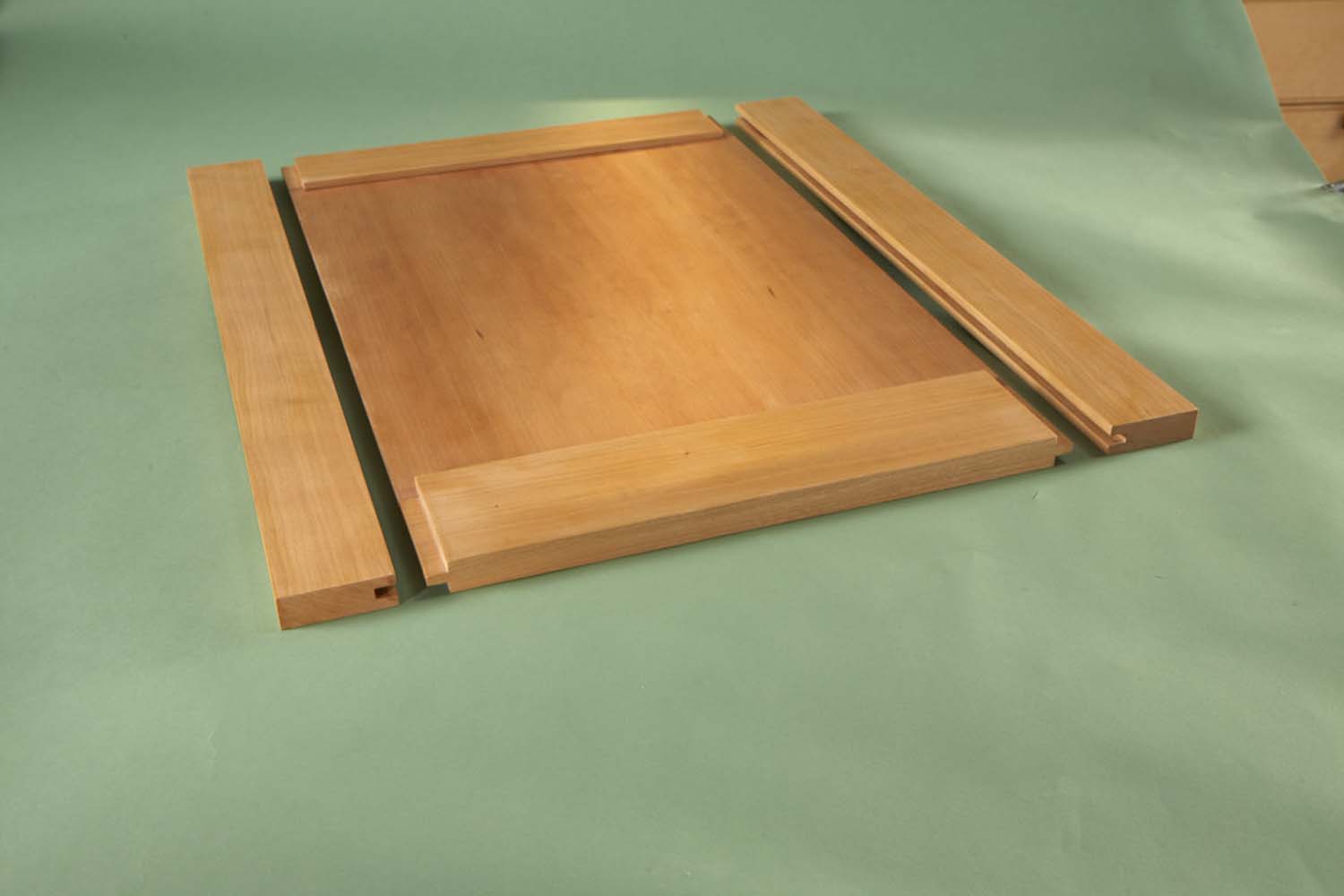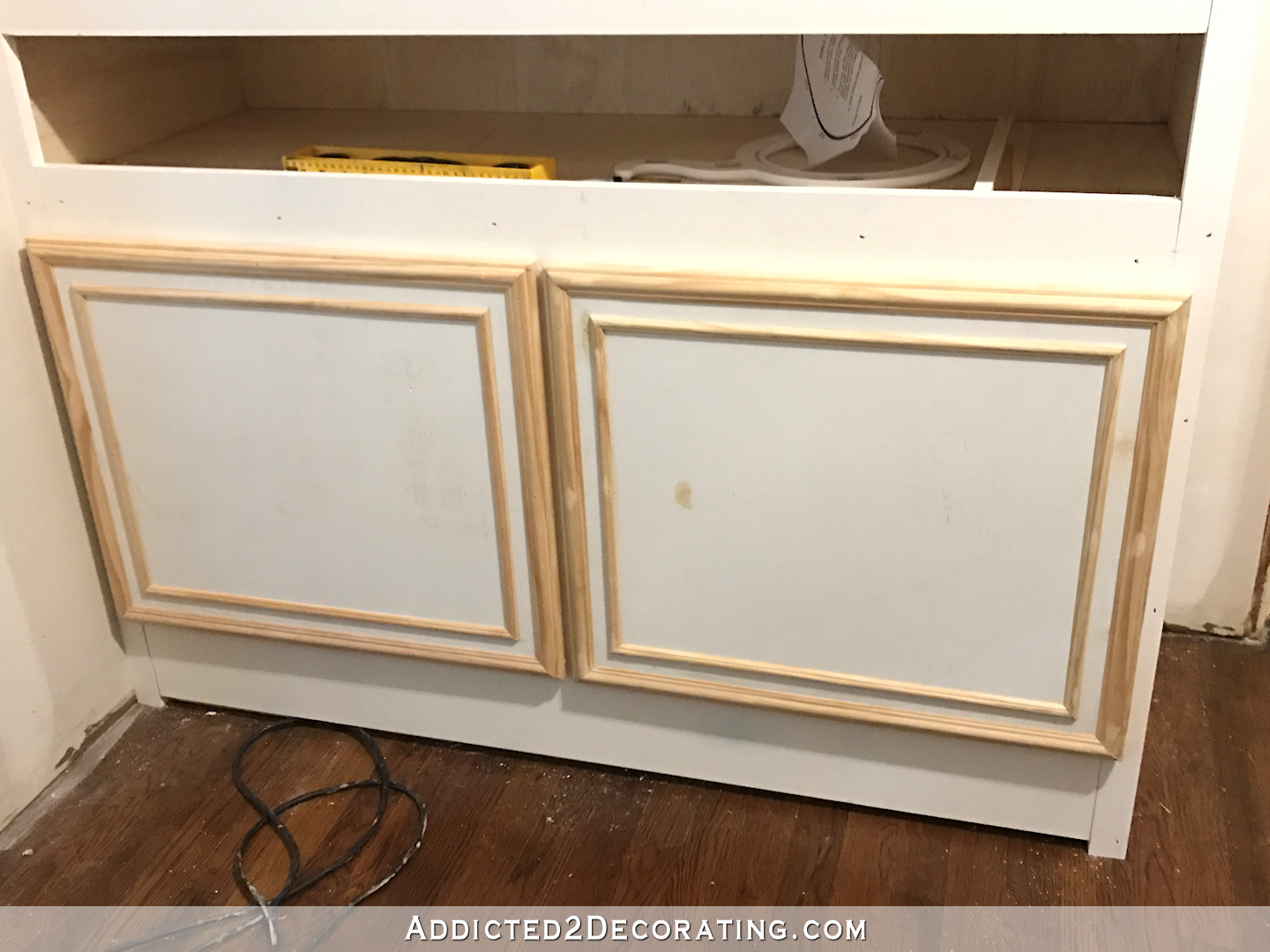Materials and Tools for DIY Cabinet Doors: Diy Making Cabinet Doors

Embarking on your DIY cabinet door project is an exciting journey! Choosing the right materials and tools will significantly impact the final result and your overall experience. This section provides a comprehensive guide to equip you for success, whether you’re a seasoned DIY enthusiast or a curious beginner. Let’s dive into the essentials!
Materials for Cabinet Door Construction
Selecting the right materials is paramount to achieving the desired look and durability of your cabinet doors. The choice depends on your budget, desired aesthetic, and the overall style of your kitchen or cabinetry. Below is a table outlining common materials, quantities (based on building four standard 30″ x 15″ doors), cost estimates (prices are approximate and may vary based on location and retailer), and potential sources. Remember to always purchase slightly more material than you calculate to account for cuts and mistakes.
| Material | Quantity | Cost Estimate (USD) | Source |
|---|---|---|---|
| Solid Wood (e.g., Maple, Oak) | 8 boards (12″ x 6′ for example) | $200 – $400 | Local Lumber Yard or Home Improvement Store |
| MDF (Medium-Density Fiberboard) | 4 sheets (4′ x 8′) | $100 – $200 | Home Improvement Store |
| Veneer (e.g., Oak, Cherry) | Sufficient for 4 doors | $50 – $150 | Specialty Woodworking Supplier or Online Retailer |
| Wood Glue | 1 bottle (16 oz) | $10 – $15 | Home Improvement Store |
| Wood Screws | Assorted sizes (depending on door construction) | $15 – $25 | Home Improvement Store |
| Cabinet Door Hinges | 8 hinges | $20 – $40 | Home Improvement Store |
| Wood Stain/Paint | Quantity depends on coverage needs | $20 – $50 | Home Improvement Store |
| Polyurethane Finish | 1 quart | $20 – $30 | Home Improvement Store |
Essential Tools for Cabinet Door Making
Having the right tools is crucial for efficient and safe work. The following list categorizes essential tools based on their function in the cabinet door making process. Investing in quality tools will significantly enhance your results and overall experience.
Diy making cabinet doors – Proper tools make the difference between a successful project and a frustrating one. This is a breakdown of the essential tools, categorized by function.
- Measuring & Marking: Measuring tape, pencil, square, marking gauge
- Cutting & Shaping: Table saw (or circular saw), jigsaw, router (optional), hand saw (for smaller cuts)
- Assembling: Clamps (various sizes), drill, screwdriver bits (Phillips and flathead), wood glue spreader
- Finishing: Sandpaper (various grits), tack cloth, brushes (for stain and polyurethane), rags
Alternative Materials and Tools for Budget-Conscious Projects
Creating stunning cabinet doors doesn’t necessitate breaking the bank. Here’s a comparison of alternative materials and tools, highlighting their advantages and disadvantages.
Budgeting for your project is key. These options offer cost-effective alternatives without sacrificing quality too much.
- Reclaimed Wood: Pros: Eco-friendly, unique character, often cheaper than new lumber. Cons: May require more work to prepare, potential for imperfections.
- Plywood: Pros: More affordable than solid wood, stable and less prone to warping. Cons: Less visually appealing than solid wood, requires careful edge finishing.
- Hand Tools (instead of power tools): Pros: Lower initial investment, less risk of injury for beginners. Cons: More time-consuming, requires more physical effort.
Safety Precautions
Safety should always be your top priority when working with power tools and potentially hazardous materials. The following precautions will help ensure a safe and enjoyable DIY experience.
Safety first! Always prioritize safety when handling tools and materials.
- Always wear appropriate safety gear, including safety glasses, hearing protection, and a dust mask.
- Ensure proper ventilation when using stains, paints, and finishes. Work in a well-ventilated area or use a respirator.
- Keep your work area clean and organized to prevent accidents.
- Follow the manufacturer’s instructions for all power tools and materials.
- Never operate power tools while tired or under the influence of drugs or alcohol.
- Keep fingers clear of cutting blades and rotating parts.
- Dispose of hazardous materials properly, according to local regulations.
Step-by-Step Guide to Making Cabinet Doors

Crafting your own cabinet doors is a rewarding experience, blending creativity with practical skills. This guide will walk you through the process of creating simple yet elegant shaker-style doors, and explore alternative methods for achieving the sophisticated look of raised panel doors. Let’s embark on this exciting DIY adventure!
Shaker-Style Cabinet Door Construction
This section details the creation of a classic shaker-style cabinet door, known for its clean lines and simple elegance. The process involves precise measurements, careful cutting, and secure assembly.
Step 1: Preparing the Frame. Begin by accurately measuring the desired dimensions of your cabinet door. Cut four pieces of your chosen wood (e.g., MDF, plywood, or hardwood) to form the frame: two stiles (vertical pieces) and two rails (horizontal pieces). Remember to account for the thickness of the panel that will fit inside the frame. A slight gap (around 1/16 inch) is often recommended for expansion and contraction.
Step 2: Cutting the Panel. Next, cut a piece of wood to fit snugly within the frame. This will be your shaker-style panel. The panel should be slightly smaller than the interior dimensions of the frame to allow for easy insertion and prevent warping.
Step 3: Creating the Joints. Use a strong joinery method to connect the frame pieces. Pocket hole joinery is a popular and relatively simple choice, requiring only a pocket hole jig and screws. Alternatively, dado joints, mortise and tenon joints, or dowel joints offer increased strength and a more refined aesthetic.
Step 4: Assembling the Frame. Carefully assemble the frame, ensuring that all corners are square and the joints are tight. Use clamps to hold the pieces firmly in place while the glue dries.
Step 5: Inserting the Panel. Once the glue is dry, carefully insert the panel into the frame. The panel should fit snugly but not be forced.
Step 6: Finishing Touches. Sand the entire door smooth, paying attention to the joints. Apply your chosen finish (paint, stain, varnish) for protection and aesthetic appeal. Allow ample drying time between coats.
Raised Panel Cabinet Door Methods
Raised panel doors add a touch of sophistication to any cabinetry. Several methods exist for creating this effect, each with its own set of tools and skill requirements.
| Method | Tools Required | Difficulty Level | Time Estimate |
|---|---|---|---|
| Router with Raised Panel Bit | Router, raised panel bit, clamps, safety glasses | Intermediate | 2-3 hours per door |
| Hand-Cut Raised Panel | Chisels, mallet, coping saw, clamps, sandpaper | Advanced | 4-6 hours per door |
| Pre-Made Raised Panel | Saw, clamps, wood glue | Beginner | 1-2 hours per door |
| CNC Machining | CNC machine, design software | N/A (Requires specialized equipment) | Variable, depends on machine and design |
Accurate Measurement and Cutting
Precise measurements are crucial for a perfect fit. Use a high-quality measuring tape and double-check your measurements multiple times. Avoid common errors like measuring from the wrong point or not accounting for the blade kerf (the width of the cut made by the saw). Consider using a marking gauge to ensure consistent measurements and straight cuts. For angled cuts, a miter saw is highly recommended. Always practice on scrap wood before cutting your final pieces.
Assembling the Door Frame and Panels: A Visual Guide, Diy making cabinet doors
Imagine a simple rectangular frame, meticulously cut and assembled. The four pieces of the frame, joined with strong mortise and tenon joints, create a robust and visually appealing structure. The raised panel, carefully shaped and sized, sits perfectly within this frame, held securely by rabbets cut into the inside edges of the frame. The entire assembly, once clamped and glued, forms a strong, durable cabinet door ready for finishing. Strong joinery is vital; it ensures the door remains structurally sound and resists warping over time. Avoid weak joints, as they can compromise the integrity of the entire door. The use of wood glue in conjunction with mechanical fasteners (screws or dowels) provides the best combination of strength and stability.
Finishing and Installation of DIY Cabinet Doors

Creating stunning, custom cabinet doors is incredibly rewarding, but the true magic happens in the finishing and installation. These final steps transform your handcrafted pieces from raw materials into elegant features that elevate your kitchen or bathroom. With careful attention to detail, you can achieve professional-looking results that you’ll be proud of for years to come.
Applying Various Finishes
The finish you choose significantly impacts the look and durability of your cabinet doors. Proper preparation is key for a flawless result, regardless of whether you opt for paint, stain, or a clear coat. Each finish requires a slightly different approach.
- Painting: Begin with a smooth, clean surface. Lightly sand the doors with fine-grit sandpaper (220-grit) to create a slightly rough surface for better paint adhesion. Apply a high-quality primer, allowing it to dry completely before applying two to three coats of your chosen paint, ensuring each coat is thoroughly dry before applying the next. A high-quality brush or sprayer will minimize brushstrokes and yield a smoother finish. Consider using a tack cloth between coats to remove any dust particles.
- Staining: Sand your doors to a smooth finish using progressively finer grits of sandpaper (starting with 120-grit and ending with 220-grit). Apply a wood conditioner to even out the wood’s absorption, allowing it to dry as directed. Apply stain following the manufacturer’s instructions, wiping off excess stain with a clean rag to prevent pooling. Multiple thin coats are better than one thick coat. Allow ample drying time between coats. A final coat of clear polyurethane will protect the stain and enhance its longevity.
- Clear Coats: For a natural wood look, a clear coat protects the wood while enhancing its grain. Sand your doors to a smooth finish as you would for staining. Apply a high-quality clear coat (polyurethane or varnish) in thin, even coats, allowing each coat to dry completely before applying the next. Again, multiple thin coats are preferable to avoid drips and runs.
Achieving Professional Results
The secret to a truly professional-looking finish lies in meticulous preparation and application. Smoothing the surface before applying any finish is paramount. Using fine-grit sandpaper to remove imperfections ensures an even coat. To prevent brushstrokes when painting, use a high-quality brush or sprayer, and apply thin, even coats. For staining, wiping off excess stain prevents pooling and uneven color. Remember, patience is key – allow ample drying time between coats to prevent problems like cracking or peeling. Even color application requires consistent technique and even pressure.
Installing New Cabinet Doors
Installing your new cabinet doors is the final, rewarding step. Accurate measurements and careful alignment are crucial for a professional look.
- Prepare the hinges: Carefully examine the existing hinges on your cabinet frames. If reusing, clean them thoroughly. If using new hinges, mark and pre-drill pilot holes to prevent splitting the wood.
- Attach the hinges: Attach the hinges to both the cabinet doors and the cabinet frames. Ensure the hinges are properly aligned before screwing them in place.
- Install the doors: Carefully hang the doors on the hinges. Adjust the hinges as needed to ensure the doors are properly aligned and close smoothly.
- Check alignment: Once all doors are installed, carefully inspect for proper alignment, ensuring all doors are level and close evenly. Make any necessary adjustments to the hinges to correct any issues.
- Final adjustments: If needed, slightly adjust the hinge screws to fine-tune the alignment and ensure a smooth, flush closure.
